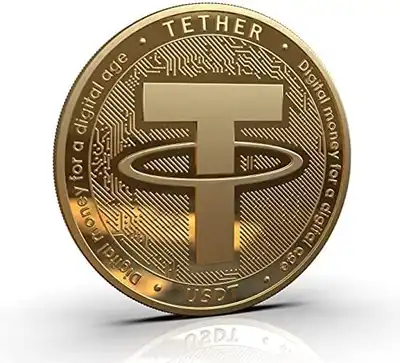Tether (USDT) is a widely recognized and controversial stablecoin in the cryptocurrency ecosystem. It is known for its peg to the US Dollar, aiming to maintain a 1:1 value ratio with the world’s leading fiat currency. As one of the earliest stablecoins, Tether has played a significant role in enabling cryptocurrency trading and providing a bridge between the traditional financial system and the world of digital assets. This overview will delve into the history of Tether, its development, and the controversies that have surrounded it.
1. Inception and Development:
Tether was launched in 2014 under the name “Realcoin” by Brock Pierce, Reeve Collins, and Craig Sellars. Initially built on the Bitcoin blockchain using the Omni Layer protocol, Tether was created to address the issue of volatility in the cryptocurrency market. The concept was simple: to offer a stable digital asset that would serve as a reliable store of value and facilitate seamless transactions on various cryptocurrency exchanges.
In November 2014, Realcoin rebranded to Tether and officially introduced its first stablecoin, USDT, pegged to the US Dollar. The idea was to back each issued Tether token with an equivalent amount of US Dollars held in reserve. This move aimed to inspire confidence among users, investors, and exchanges in the stability and redeemability of Tether.
2. US Dollar Reserves and Controversies:
One of the central tenets of Tether’s promise was that each USDT in circulation was backed by an actual US Dollar held in reserve. This claim initially garnered trust, as it offered a level of reassurance that other stablecoins lacked. However, over time, concerns began to emerge regarding the transparency and legitimacy of Tether’s reserves.

Tether faced criticism for its lack of independent audits and failure to provide conclusive evidence of its USD reserves. The company’s reluctance to undergo third-party audits fueled suspicions about the possibility of fractional reserve practices, where the amount of US Dollars held in reserve might not match the total supply of USDT in circulation.
3. Legal and Regulatory Challenges:
As Tether grew in popularity and market capitalization, it attracted the attention of regulators and law enforcement agencies. The company behind Tether, Tether Limited, faced legal challenges and investigations related to its operations and compliance with financial regulations.
In 2019, the New York Attorney General (NYAG) filed a lawsuit against Tether Limited and its affiliated crypto exchange Bitfinex, alleging that the companies commingled funds and concealed losses. The lawsuit accused Tether of misrepresenting the backing of USDT tokens and raised questions about the stability and reliability of the stablecoin.
4. Expansion and Blockchain Adoption:
Despite the controversies, Tether continued to expand its presence in the cryptocurrency market. It moved beyond its initial issuance on the Bitcoin blockchain and expanded to other blockchain platforms, including Ethereum and Tron, through the use of ERC-20 and TRC-20 tokens.
This multi-blockchain strategy allowed Tether to tap into the growing ecosystems of these platforms and broaden its usability. As a result, Tether became one of the most widely used stablecoins in the cryptocurrency industry.
5. Evolving Perception and Industry Impact:
The controversies and legal challenges surrounding Tether have had a significant impact on the perception of stablecoins in general. While Tether remains a dominant player in the stablecoin market, the lack of complete transparency and regulatory uncertainties have led to the rise of alternative stablecoins with different approaches, such as USDC (USD Coin) and DAI.
Despite its critics, Tether’s influence on the cryptocurrency market cannot be denied. It has facilitated trading liquidity, acted as a common base pair for numerous cryptocurrency exchanges, and offered a reliable shelter during periods of intense cryptocurrency price volatility.




